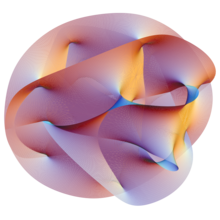MURDER, POLITICS, AND THE END OF THE JAZZ AGE
by Michael Wolraich
Order today at Barnes & Noble / Amazon / Books-A-Million / Bookshop

|
MURDER, POLITICS, AND THE END OF THE JAZZ AGE by Michael Wolraich Order today at Barnes & Noble / Amazon / Books-A-Million / Bookshop |

For want of a nail, the shoe was lost; For want of the shoe, the horse was lost; For want of the horse, the rider was lost; For want of the rider, the battle was lost; For want of the battle, the kingdom was lost; And all for the want of a nail.
DICK III
My universe has just dissolved into nothingness. The North Star is no longer the
one reference point I can count on from time to time to reaffirm EXACTLY WHERE
IN THE FUCK I AM.
Now when I was a lad I was taught something along these
lines:
His 1687 publication of the Philosophiæ Naturalis Principia Mathematica (usually called the Principia) is considered to be among the most influential books in the history of science, laying the groundwork for most of classical mechanics. In this work, Newton described universal gravitation and the three laws of motion which dominated the scientific view of the physical universe for the next three centuries. Newton showed that the motions of objects on Earth and of celestial bodies are governed by the same set of natural laws by demonstrating the consistency between Kepler's laws of planetary motion and his theory of gravitation, thus removing the last doubts about heliocentrism and advancing the scientific revolution. wikipedia
I never really grasped all the Newtonian nuances but I
understood that for every action there was a reaction, like when I would
correct my mother on some historical matter as a child.
I also knew that gravity was very, very important even
though nobody could explain exactly what gravity was.
Then this Einstein character came along and 'disrupted'
certain set ideas that you would think had nothing to do with me; something
about general relativity and special relativity.
And I learned so much about the immense universe we live in:
http://www.youtube.com/watch?v=JWVshkVF0SY
Okay, so a guy named Niels Bohr (They don't spell so well in Denmark you know) came up with what they call the Bohr Model for the atom
Basically, there was a nucleus or center located in each
atom. This nucleus was made up of protons and sometimes neutrons were thrown in
there just for extra weight, I guess. Then there were these tiny, tiny
electrons circling this nucleus.
Everything was soooooooooo damn simple really. Hell, even a
neutron was defined as some sort of union between a proton and an electron.
So basically, the atom looked like a solar system except the
mass type stuff was in the center of an atom while the energy stuff was in the
center of the solar system.
Well, things were much more complicated than all this, I can tell you.
| The proton is a subatomic
particle with an electric
charge of +1 elementary charge.
It is found in the nucleus
of each atom, along
with neutrons,
but is also stable by itself and has a second identity as the hydrogen
ion, H+. It is composed of three fundamental
particles: two up
quarks and
one down
quark.[2] String theory |
|
 |
|
| Superstring theory
|
Now I have to step back at this point and tell you that the
first 'atomic theory' of sorts came by way of the Greeks:
The word "atom" (from the ancient Greek adjective atomos, 'undivisible'[1]) was applied to the basic particle that constituted a chemical element, because the chemists of the era believed that these were the fundamental particles of matter. http://en.wikipedia.org/wiki/Atomic_theory
So an atom was supposed to be indivisible, like our country
before Neils Bohr and then DeMint appeared on the scene.
That is, certain Greeks came to the conclusion that
everything on earth, everything in the sea, everything in the air could be
boiled down to the tiniest component parts and these component parts were the
end of it. That is, atoms were the smallest things that could ever be
discovered and an atom was indestructible; kind of like Superman.
And here, just one part of an atom (which no one has really ever 'seen') is made of three different parts. But wait till you see this:
In physics, subatomic particles are the small particles composing nucleons and atoms. There are two types of subatomic particles: elementary particles, which are not made of other particles, and composite particles. Particle physics and nuclear physics study these particles and how they interact.[1]
Elementary particles of the Standard Model include:[2]
- Six "flavors" of quarks: up, down, bottom, top, strange, and charm;
- Six types of leptons: electron, electron neutrino, muon, muon neutrino, tau, tau neutrino;
- Twelve gauge bosons (force carriers): the photon of electromagnetism, the three W and Z bosons of the weak force, and the eight gluons of the strong force.
I mean talk about your Electric Kool-Ade, six frickin
flavors for chrissakes.
And that is just your Standard Model. My God, what if you
opt for something in the more luxury model level? Could be there are twelve different flavors.
Okay, so if things are not bad enough already you should see what National Geographic just sent me yesterday:
Protons, among the building blocks of atoms, are even smaller than we thought--and the unexpected discovery may alter some of the most trusted laws of physics.
All atoms are made up of nuclei orbited by electrons. The nuclei, in turn, are made of neutrons and protons, which are themselves made of particles called quarks. (Related: "'God Particle' May Be Five Distinct Particles, New Evidence Shows.")
For years the accepted value for the radius of a proton has been 0.8768 femtometers, where a femtometer equals one quadrillionth of a meter.
The size of a proton is an essential value in equations that make up the 60-year-old theory of quantum electrodynamics, a cornerstone of the Standard Model of particle physics. The Standard Model describes how all forces, except gravity, affect subatomic particles. (See "Einstein's Gravity Confirmed on a Cosmic Scale.")
But the proton's current value is accurate only by plus or minus one percent--which isn't accurate enough for quantum electrodynamics, or QED, theory to work perfectly. So physicists have been searching for ways to refine the number.
Smaller Proton Size Revealed by Lasers
In a ten-year experiment, a team led by Randolf Pohl of the Max-Planck Institute of Quantum Optics in Garching, Germany, used a specialized particle accelerator to alter hydrogen atoms, which are each made of a single proton orbited by an electron...
(Related: "Large Hadron Collider Smashes Protons, Sets Record.")
It's possible the smaller proton means the Rydberg constant hasn't been correctly measured. This value describes the way light gets emitted from various elements--a key component of spectroscopy, which is used, for instance, to tell which kinds of elements exist in galaxies and the vast interstellar gas-and-dust clouds called nebulae
Well you can imagine the degree of my angst upon discovering
all of this. Our expert scientists can no longer figure out the distances
between the nucleus of an atom and its electrons. All of which we have never
managed to see in the first place of course.
Well you can see where me and Bill Shakespeare are going
with this?
Let us take another look at all of this:
For years the accepted value for the radius of a proton has been 0.8768 femtometers, where a femtometer equals one quadrillionth of a meter.
You might dismiss all this by thinking: what are a few tenths of a
femtometer to me, anyhow?
Well if 99.999999999% of all the mass in the universe is
comprised of atomic nuclei, and now there seems to be a change in the actual
mass of every single proton of every single nucleus of every single atom in the universe, well.....you
can only imagine.
For want of a few tenths of a femtometers, the mass of an atom was lost; For want of the actual calculation for the mass of an atom, the calculations for the atomic weight of all types of matter was lost; For want of the actual atomic weight of all types of atoms, the actual mass of all types of matter was lost; For want of the proper calculations concerning matter, the actual concept of the entire universe was lost; And all for the want of a few tenths of a femtometer.
I predict that there is going to be a boom as far as
employment for software experts specializing in the field of physics.
A whole lot of computing goin' on.